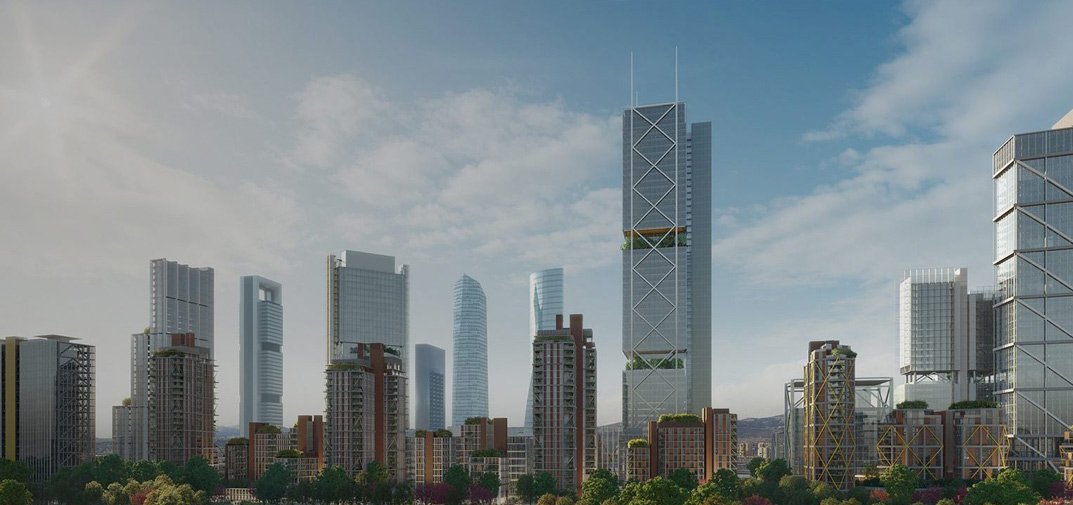Smarttia / Real Estate / Insights
Madrid Nuevo Norte, a landmark project where Smarttia will be one of the main developers is progressing with the creation of the Malmea – San Roque – Tres Olivos Management Committee
November 4th, 2021 / Real Estate
Smarttia / Real Estate / Insights
November 4th, 2021 / Real Estate

Madrid Nuevo Norte has taken a new key step in its development by constituting today the Management Commission of the Malmea – San Roque – Tres Olivos Area (APE 08.20). In this way, the majority of land owners in this urban area have grouped together with the aim of starting to work on the planning execution initiative, which will allow the future Compensation Board to be constituted and the urbanization of the area to start as soon as possible.
The constitution of this Management Committee is another important milestone within the current stage of urban management of Madrid Nuevo Norte, since it will allow to start working on the elaboration of the bases and statutes of the future Compensation Board, an urban entity that will be responsible for drafting the reparcelling project and managing and paying for the urbanization works, as well as in the drafting of the urbanization project of the APE 08.20, a document that will define the execution of the works in the area and that must be subsequently approved by the City Council.
Both the urbanization project and the bases and statutes of the Compensation Board are necessary documents so that the initiative for the execution of the planning of the area can be presented, a step prior to the constitution of the Compensation Board, as set out in article 106 of the Land Law of the Community of Madrid.
The Management Committee has been constituted by 193 owners, representing more than 55% of the ownership of the land, gathering a wide sample of the heterogeneity of the property of this area, with individuals, industrial owners or real estate developers, being also open to new incorporations.
This is the second management committee already underway in the development, after constituting last June the APE 05.31 Chamartín Business Center, where the large office district of Madrid Nuevo Norte will be built, with the potential to turn Madrid into the main business center in southern Europe and one of the most attractive destinations for companies around the world.
The Malmea – San Roque – Tres Olivos Area, 1,029,647 m2, has a total buildability of 965,321 m2, with offices (214,864 m2e), shops (36,119 m2e) and homes (714,338 m2e), with more than 20% of this residential buildability for protected housing.
This action resolves the urban edge of the historic center of Fuencarral and the neighborhoods of Begoña and Tres Olivos, regenerate degraded land in disuse and end the historical isolation of the area, solving mobility problems. Public endowments have been planned that will supply the historical shortcomings of these neighborhoods, will be located next to the consolidated areas and will be sized to meet the needs of both the future residents of Madrid Nuevo Norte and the people who already reside in the surrounding neighborhoods.
As for the urban design, the area of Malmea – San-Roque – Tres Olivos will have an eminently residential character, with more than 7,000 homes and prominence of commerce on the ground floor. The new development will have a north to south area, the so-called “green axis” of Madrid Nuevo Norte, a linear network of interconnected parks that will flow north into the foothills of El Pardo, which will serve to give continuity towards the interior of the city both the future Metropolitan Forest of the city of Madrid and the regional Green Arch. The historical and cultural heritage of the neighborhoods and the memory of their agricultural and industrial past will be valued, and two historic hermitages will be integrated into the network of parks: The hermitage of San Roque, built in the sixteenth century, and the hermitage of Our Lady of Lourdes, of the nineteenth century, will be central pieces of two parks located on the green axis.
Antonio de Cabezón Street, bordering the part of the railway line north of the M-30, is naturalized with green areas of an agricultural nature, recalling the use that this area of Madrid historically had.
The area will have two powerful public transport nodes located to the north and south, each of them composed of a new Metro station, a Proximity Railway Station (the existing one in Fuencarral Norte and a new one in Fuencarral sur) and several stops of the new high-capacity priority bus system, with a reserved platform and traffic light priority. Both transport nodes will be transformed into true neighborhood centralities, since around them greater tertiary office and commercial buildability has been planned, to create environments full of life next to the transport stations.
Cycling mobility will be enhanced with a new network of bike lanes that will run through the area and connect with the existing network, the Cycling Green Ring and the Colmenar bike lane.
The area of Malmea – San Roque – Tres Olivos will have multiple connections to the east: three bridges, a pedestrian walkway and a tunnel will link Fuencarral and Las Tablas. To the south, it will be linked to the Business Center by three bridges over the M-30: two new ones on Agustín de Foxá and Antonio de Cabezón streets, and the reform and widening of the existing bridge in Mauricio Legendre.
In the chapter of large infrastructures that are going to be executed in the area of Malmea – San Roque – Tres Olivos, it is worth mentioning the relocation and total renovation of important pipelines of the Canal de Isabel II, through which 80% of the drinking water of the city of Madrid circulates. In total, more than 12 kilometers of pipes will be replaced, to enhance the maximum efficiency of water resources and the management of water consumption.